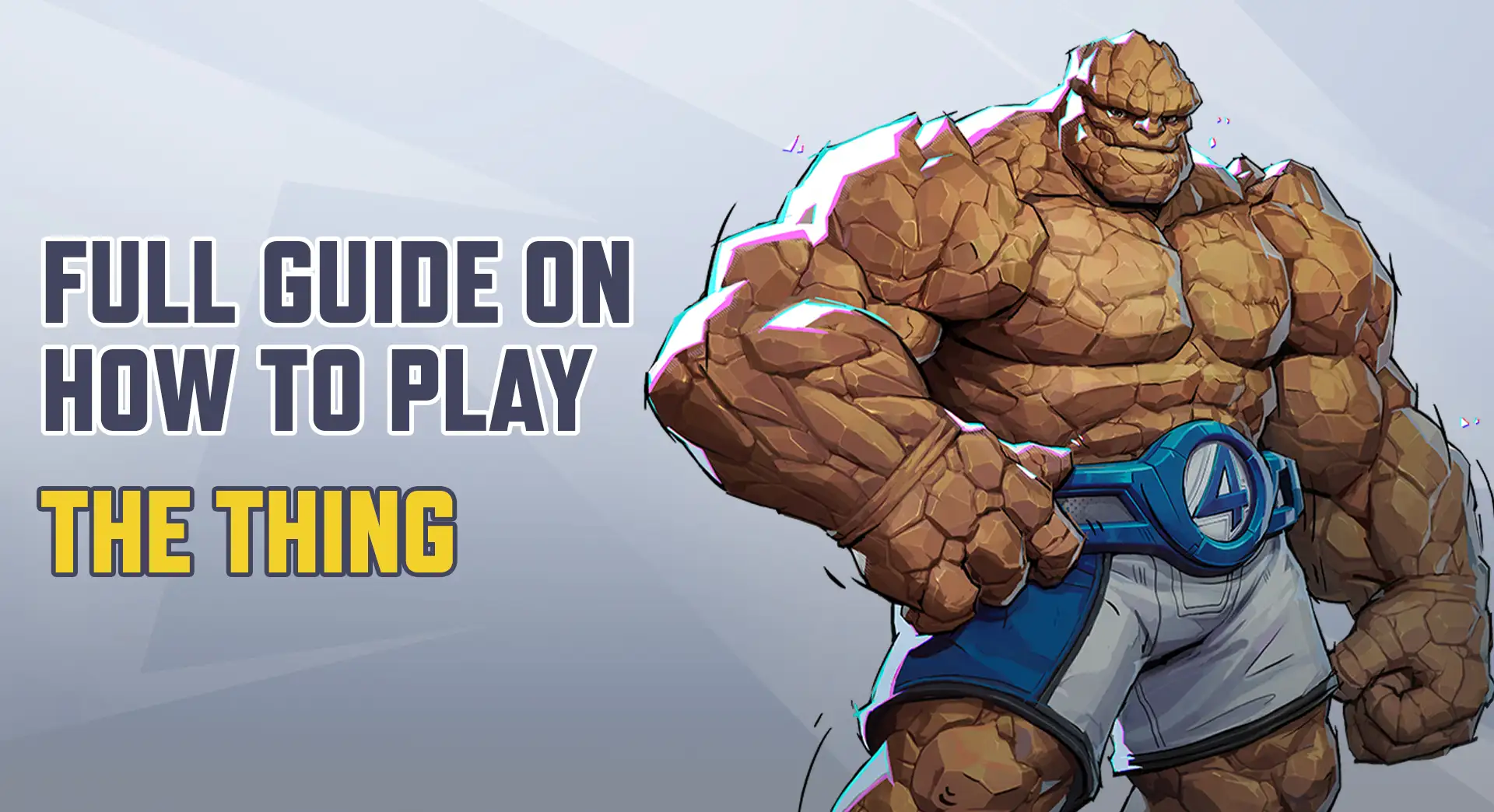
Did you know this about invisible Woman?
March 12, 2025
Did you know this about Squirrel Girl?
March 14, 2025
Overview
The Thing (Benjamin Grimm) is a melee Vanguard built for close-quarters combat, excelling at disrupting enemy formations and controlling the battlefield. His playstyle focuses on initiating fights, shielding teammates, and creating chaos in the enemy’s backline.
His greatest strength lies in his passive ability, which grants him immunity to knockbacks and displacement effects. This allows him to hold his ground in fights, making him a formidable force for securing objectives and maintaining frontline pressure.
Positioning and Playstyle
Playing The Thing effectively means understanding that you’re not a traditional shield tank. Unlike other Vanguards like Doctor Strange and Magneto, who focus on shielding teammates, your role is to disrupt, control space, and make life difficult for the enemy team.
Offensive Positioning
When attacking, avoid standing directly in front of the main choke point. Instead, position yourself slightly to the side to gain a better angle for your charge ability. Wait for the enemy to commit resources to the main fight, then use Yancy Street Charge to break through their frontline and attack their backline supports from an unexpected angle. On payload maps, switch between pushing with your team and flanking routes to keep the enemy team guessing. This constant unpredictability forces them to split their attention, easing pressure on your teammates pushing the objective.
Defensive Positioning
On defense, position yourself between your backline and common flank routes. Rather than holding the choke like a shield-based Vanguard, your job is to intercept enemy divers before they reach your supports. Maintain a distance of about 10-15 meters ahead of your healers and keep track of threats like Black Panther or Psylocke. When they engage, immediately use Yancy Street Charge to activate your mobility prevention zone, cutting off their escape routes. Additionally, use Embattled Leap to provide damage reduction to an ally in danger.
If another Vanguard is on your team, coordinate your positioning to create a “good cop, bad cop” setup. Let the shield tank hold the choke while you punish enemies trying to break through. With mobility-based DPS heroes like Spider-Man on your team, your charge can create an ideal distraction for them to strike from unexpected angles.
When playing with Invisible Woman, stay closer than you would with other Strategists. Her team-up ability enhances your survivability, allowing for more aggressive positioning. Always keep line of sight with at least one teammate you can leap to with Embattled Leap, as it serves as your emergency escape. Without it, deep dives become much riskier.
Target Priority
Understanding your role and target priorities is crucial for success.
Primary Targets: Support Heroes
Support heroes should be your highest priority in most scenarios. Unlike some Vanguards that struggle to reach the backline, your charge ability allows you to directly engage high-value targets. One of the most critical targets is Doctor Strange, as his resurrection ability can undo your team’s efforts. Isolating and pressuring him is essential. Similarly, heroes like Mantis, whose healing can sustain enemies through your team’s damage, require immediate focus.
Secondary Targets: Mobility-Based Heroes
Heroes reliant on mobility are significantly weaker when trapped in your mobility prevention zone. For instance, Black Panther loses much of his threat potential when he cannot dash. Time your ability to catch him after he engages but before he can retreat.
Opportunistic Targets: Ranged Duelists
While ranged Duelists can deal heavy damage from a distance, they are vulnerable up close. If they overextend or become exposed, they make excellent targets. Though not typically your main priority, certain Vanguards are worth engaging in specific situations. Doctor Strange becomes a priority when his shield protects multiple enemies—charging through to disrupt his positioning can weaken their defense. However, this can be a risky move, so assess whether it’s worth the potential trade-off.
Adapting to the Fight
Avoid fixating on a single target if the situation changes. Be ready to shift focus if a support becomes exposed, help your Strategists if they are under attack, or reposition to contest objectives when necessary. Playing The Thing isn’t just about eliminating enemies—it’s about creating space, disrupting enemy formations, and forcing them to react to your presence. Sometimes, your biggest impact comes from disorienting the enemy team rather than securing eliminations.
